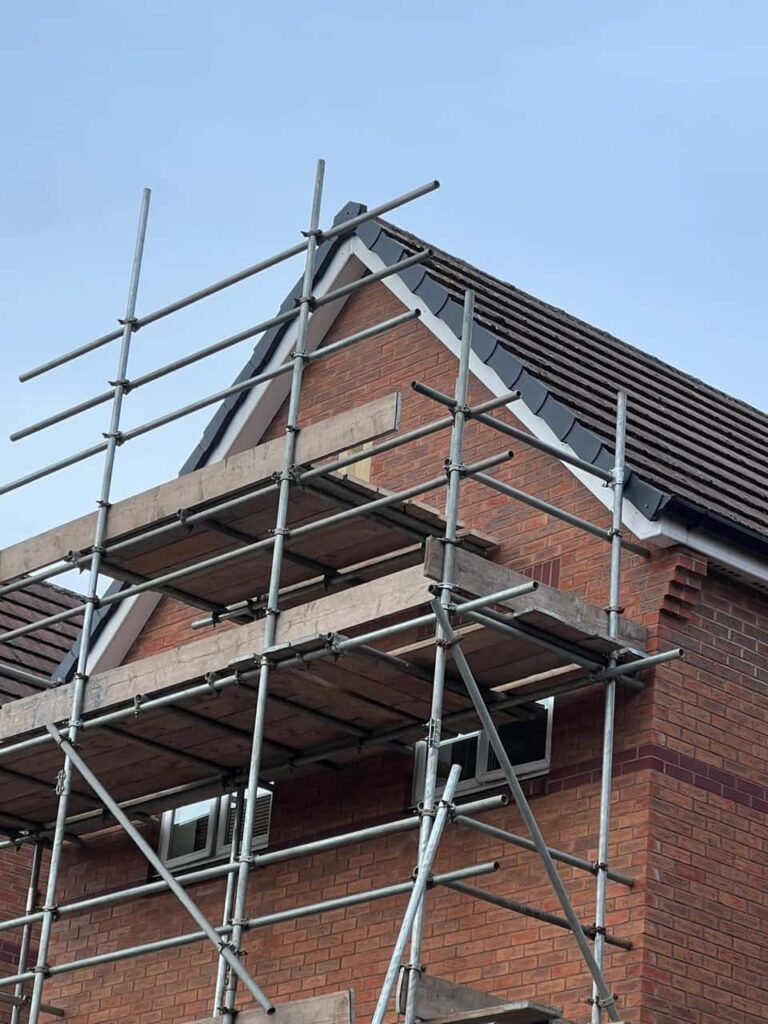Introduction
Lead flashing is one of the unsung heroes of a well-built roof — quietly protecting your home from water ingress where tiles meet walls, chimneys, and roof valleys. Yet, despite its importance, it’s often overlooked until visible damage begins to show. If your flashing is failing, your home in East Bridgford could be at risk — and the consequences can escalate quickly.
At East Bridgford Roofing Repairs, we regularly help homeowners across Nottinghamshire identify and resolve issues with worn or poorly fitted lead flashing. In this post, we highlight six clear warning signs that your flashing might be compromised, and explain why early intervention can save you from serious and costly damage.
1. Water Stains or Damp Patches Indoors
One of the most immediate signs of failing flashing is water appearing where it shouldn’t — inside your home. Look out for:
- Damp marks on ceilings or around chimney breasts
- Discolouration on interior walls
- A musty smell in the loft or upper rooms
These signs usually mean water is seeping in through the roofline, and damaged flashing is often to blame.
2. Flashing That’s Lifting, Warped or Missing
If you notice flashing that’s no longer snug against the brickwork or roof surface, it’s a clear signal something’s wrong. Over time, exposure to wind, rain, and seasonal changes can:
- Cause flashing to lift at the edges
- Warp the material, creating gaps
- Dislodge sections altogether
Even small gaps can allow large volumes of water into your property over time.
3. Visible Corrosion or Cracking
Lead is a durable material, but even it isn’t immune to wear and tear. Look out for:
- Hairline cracks in the leadwork
- White streaks or powdery deposits (a sign of oxidisation)
- Deterioration around sealant joints
These issues may start small, but they often spread quickly and compromise the waterproofing integrity of the roof.
4. Water Dripping Behind the Guttering
Water should flow cleanly into the gutters and away from the property. If you’re seeing:
- Water running behind gutters
- Drips from unexpected points on a dry day
- Overflowing even in light rain
…it could be the flashing around roof junctions that’s directing water the wrong way.
5. Moss and Mould Growth on Walls or Roofline
Persistent moisture from poor flashing leads to moss and algae flourishing around roof edges and vertical walls. Keep an eye out for:
- Green or dark streaks on the masonry
- Soft or crumbling render near the roofline
- Plants or moss thriving near flashing areas
This is often a sign that moisture is leaking through, and once mould sets in, the repair bill rises.
6. Historic or Poor-Quality Installation
Not all flashing is created equal. If your roof is older, or if previous repairs were rushed or used low-grade materials, the flashing may already be past its best.
- Has your roof had repeated leak issues?
- Was flashing replaced or patched without lead?
- Are joints filled with cracked or brittle cement?
If the answer is yes, your roof is likely overdue a flashing upgrade.
Conclusion
Lead flashing might not be the most glamorous part of your roof, but it’s one of the most essential. If left unchecked, damaged flashing can cause widespread water ingress, structural decay, and internal damp — problems that are far more expensive to fix than a timely repair.
At East Bridgford Roofing Repairs, we specialise in identifying flashing issues early and delivering long-lasting, professional solutions that protect your home for years to come. If you suspect your flashing may be failing, don’t wait for visible damage — contact our experienced team today and keep your roofline watertight and worry-free.
Call us on: 0115 647 1193
Click here to find out more about East Bridgford Roofing Repairs
Click here to complete our contact form and see how we can help with your roofing needs.

